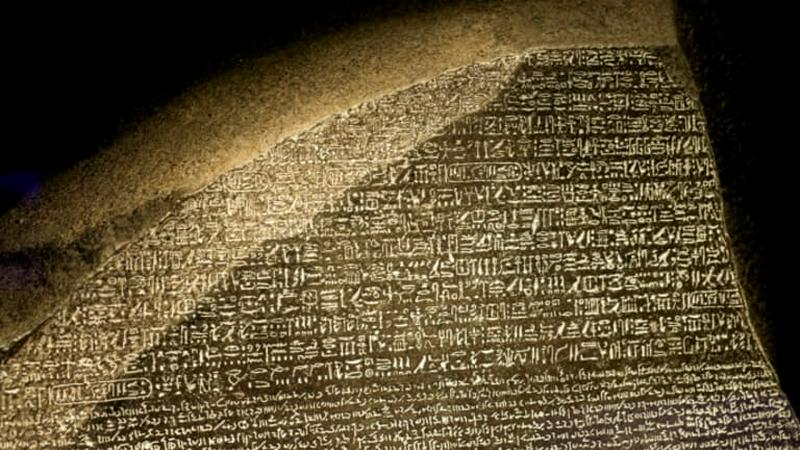Rosetta Stone: The Key To Deciphering Egyptian Hieroglyphics
By | February 26, 2019

Egypt fever hit British explorers and academics from roughly the late 18th century into well after Howard Carter unearthed the tomb of King Tutankhamen in 1922. The Great Pyramids, the enigmatic Sphinx, and the strange hieroglyphics fascinated scholars from the British Museum and archaeologists carted boatloads of ancient artifacts from Egypt to help historians learn about the ancient Egyptian people. One accidental discovery in 1799 in the city of Rosetta proved to be the key to unlocking the unknown written language of the Egyptian people. The Rosetta Stone was one of the most important discoveries from antiquity.

The Rosetta Stone was Found by Accident
On July 19, 1799, during Napoleon’s Egyptian Campaign, French soldiers who were doing repairs to a fort in Rosetta, a town north of Alexandria, discovered a slab of black basalt covered with strange writing. The soldiers couldn’t read the writing on the slab but they were ordered to turn over any old artifacts to Napoleon’s men. They understood that there may be something special about this slab.

Three Languages Were On the Slab
The slab, which became known as the Rosetta Stone, contains three written languages. One was Egyptian hieroglyphics…a strangely different type of writing than the European scholars had ever seen before. Alongside the Egyptian hieroglyphics, there was ancient Greek and the Egyptian demotic writing. Scholars could read the ancient Greek text on the stone. The inscription noted that all three passages were identical in meaning. Knowing that, scholars could begin the task of unlocking the meaning of the hieroglyphics.

The British Tried to Take the Ancient Finds
Napoleon left Egypt but the French troops stayed for another year and a half, holding off attacks by the British and Ottomans. In March of 1801, however, the British defeated the French and seized control of the antiquities they had in their possession, including the Rosetta Stone. This touched off a debate in the political and scientific communities. Did the artifacts belong to the French? Could archaeological and scientific finds be counted as spoils of war? An agreement, called the Capitulation of Alexandria, was finally reached and signed by the British, French, and Ottomans.

The British Take Possession of the Rosetta Stone
The Rosetta Stone traveled to England by ship and was presented to King George III who decreed that it should be housed in the British Museum. There, it would be available to scholars for study. Except for a short time during World War I, the Rosetta Stone has remained at the British Museum.

Many Scholars Worked as Code Crackers on the Rosetta Stone
Soon after the Rosetta Stone’s arrival in England, a British Egyptologist named Thomas Young made strides in decoding the stone’s inscriptions. But his work plateaued. A French Egyptologist, Jean-Francois Champollion, is credited with finally unlocking the tablet’s secrets.

Champollion was a Self-Taught Linguist
In addition to his studies of ancient Egypt, Champollion was a self-taught expert in ancient languages. He could read both Greek and Coptic written language and was able to discern some of the similarities between Coptic and Demotic. From there, he theorized that some of the pictures and symbols in the hieroglyphics represented actual objects, some represented sound, and others represented groups of sounds He analyzed patterns and frequency of symbols and eventually was able to read the hieroglyphics.

Deciphering Hieroglyphics Aided in Understanding the Ancient Egyptians
Champollion’s accomplishment was groundbreaking. For the first time, scholars could read the inscriptions let behind across Egypt, on artifacts, on temple walls, and on tombs. The rich and complex Egyptian culture was unlocked, giving researchers a fuller understanding into the life, religion, culture, and government of the ancient society.

